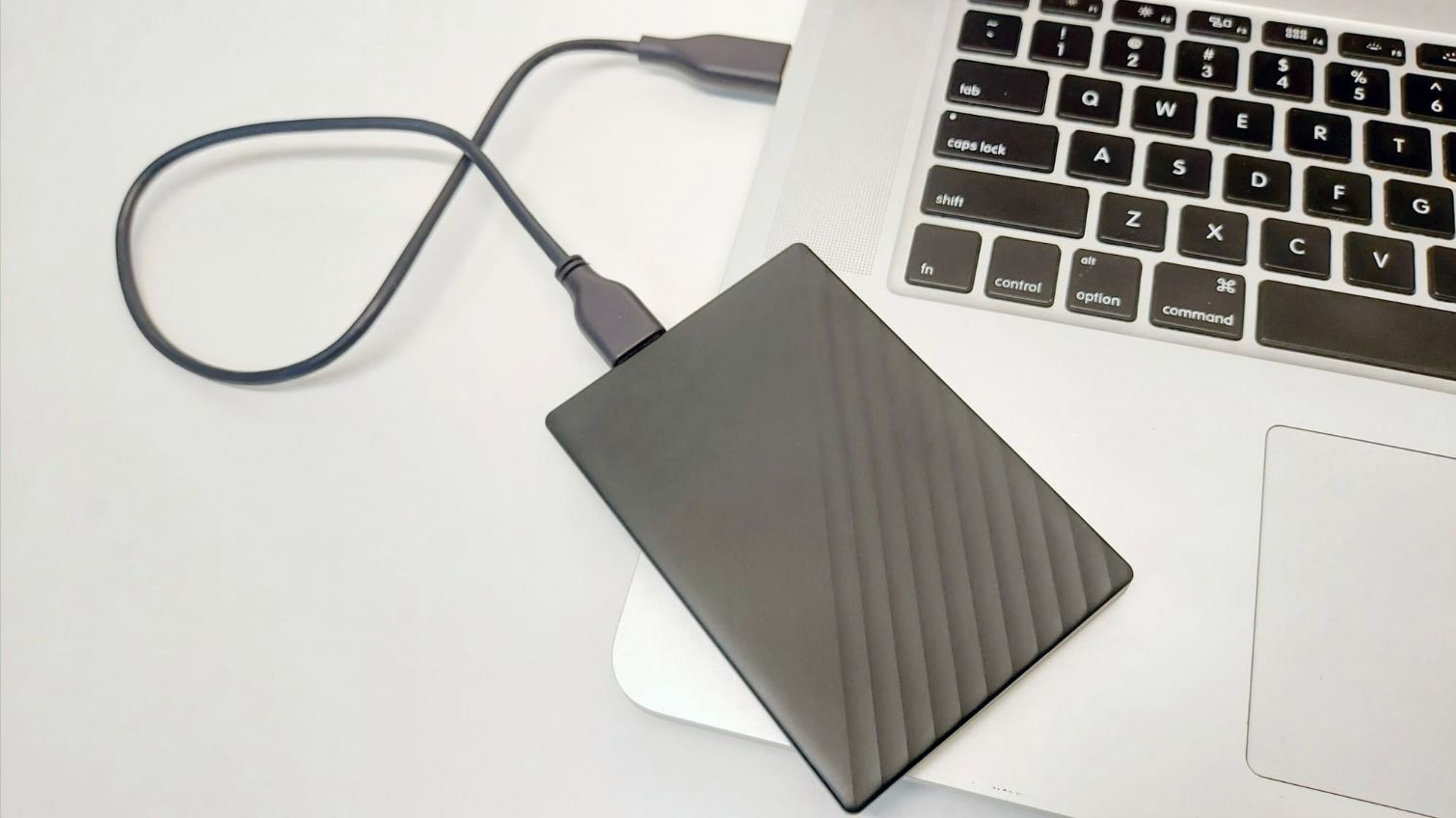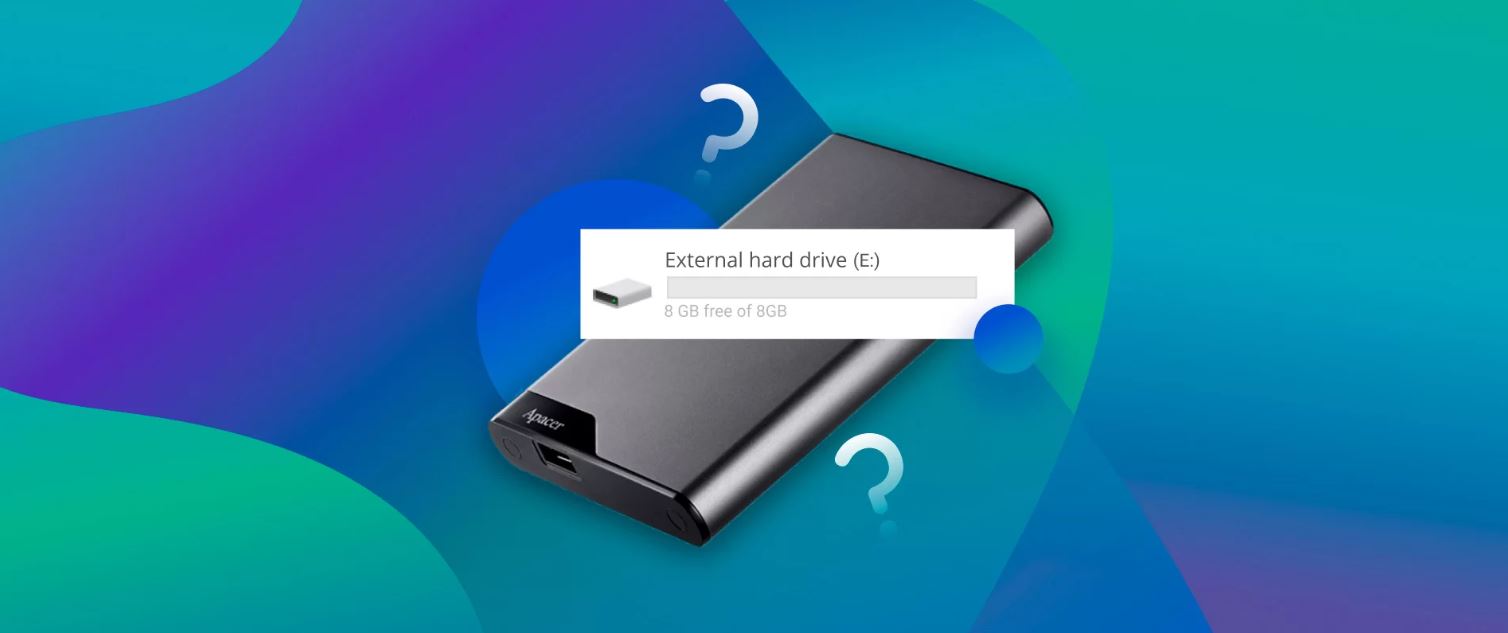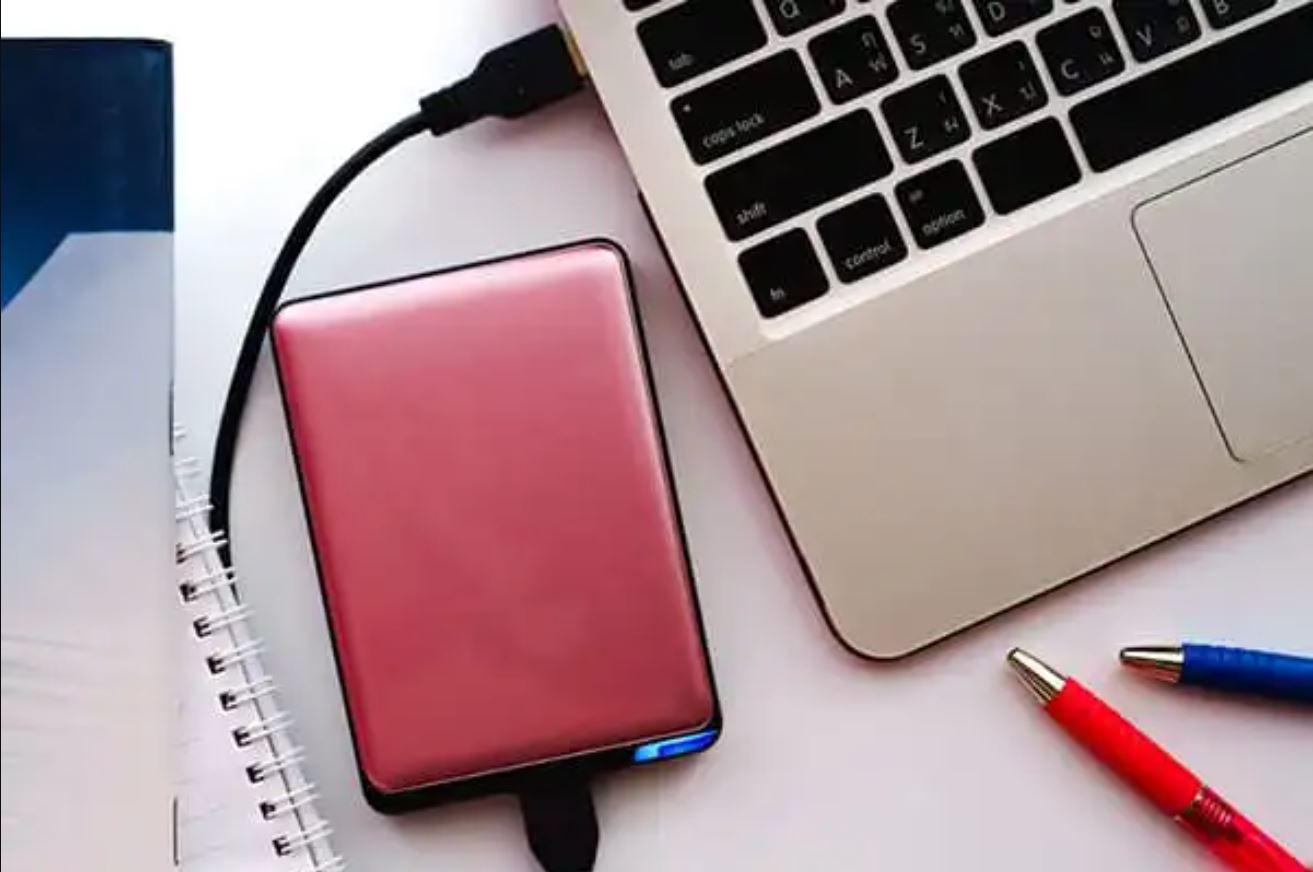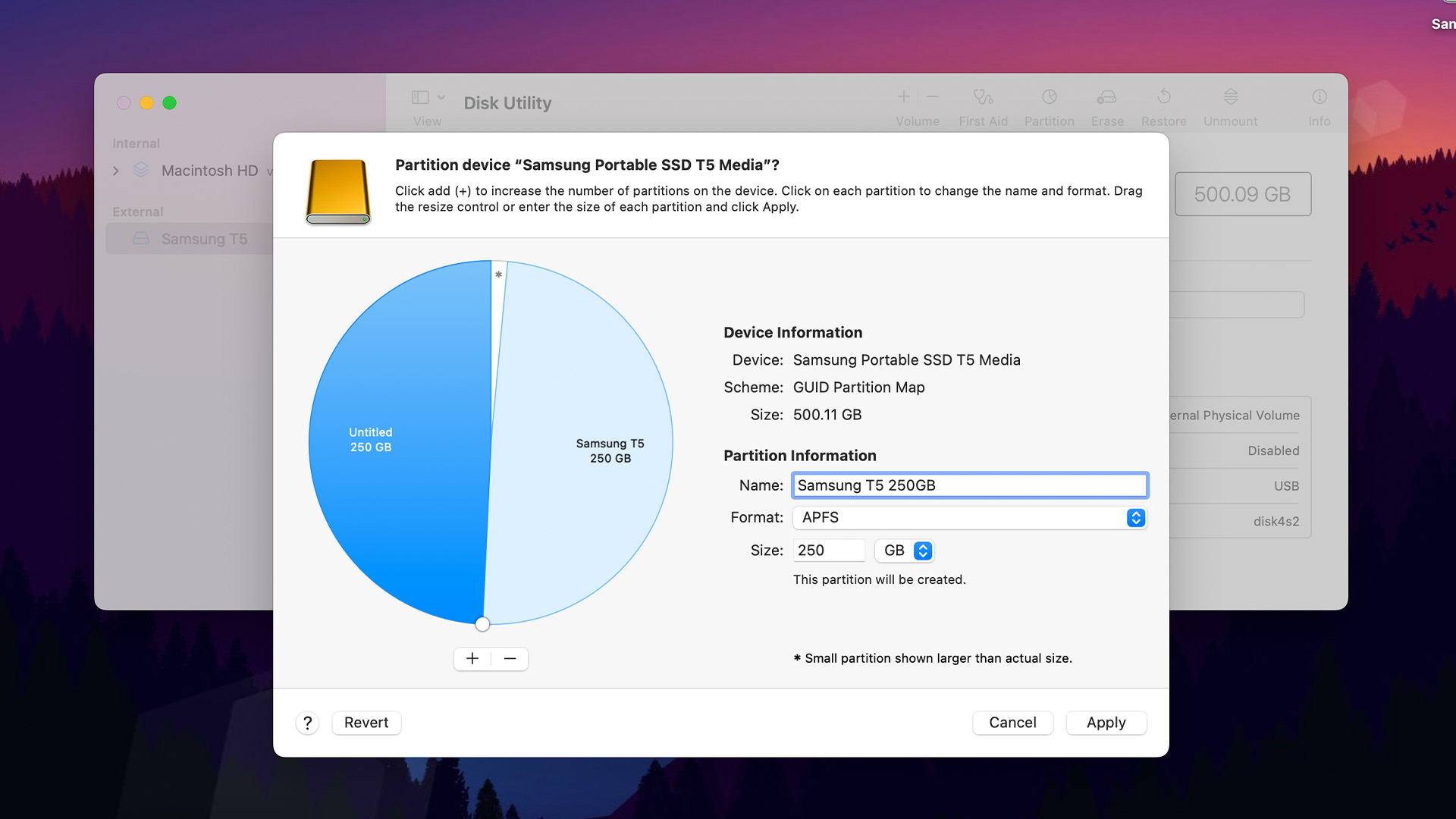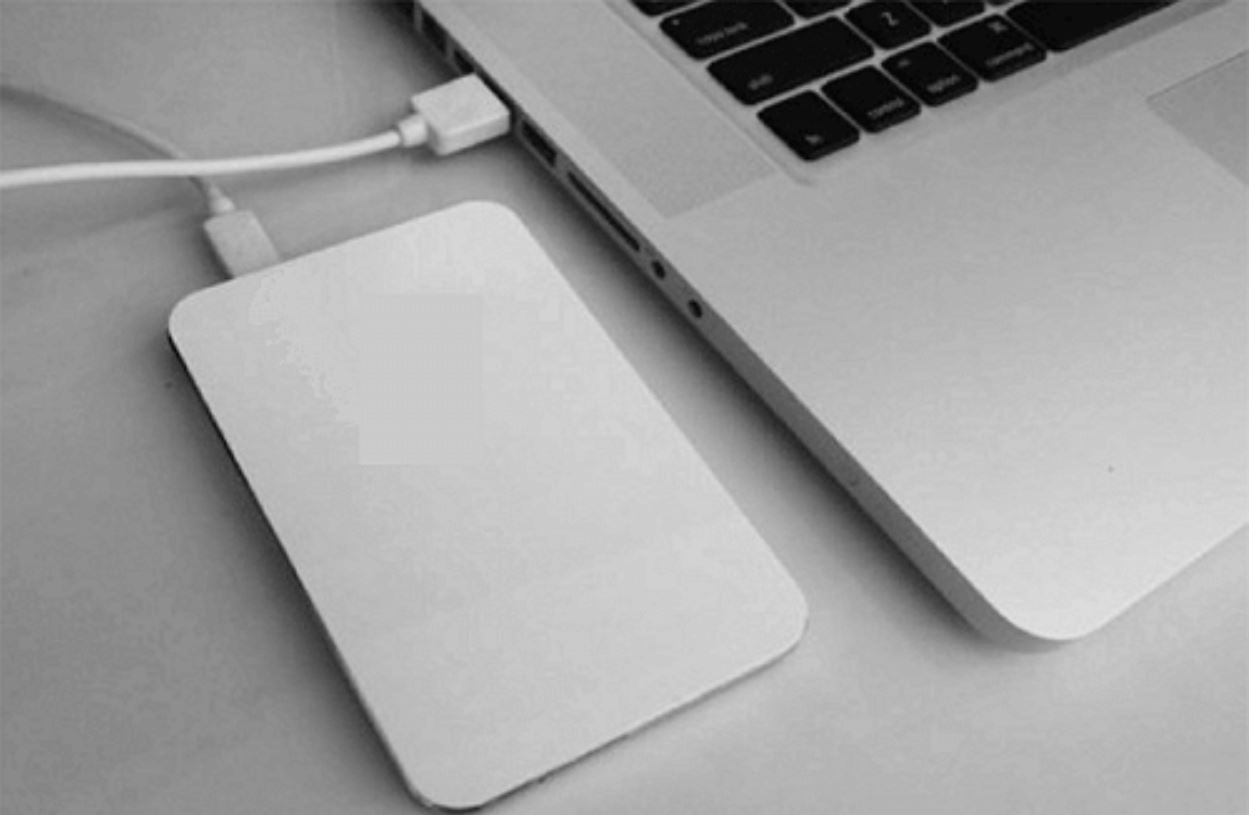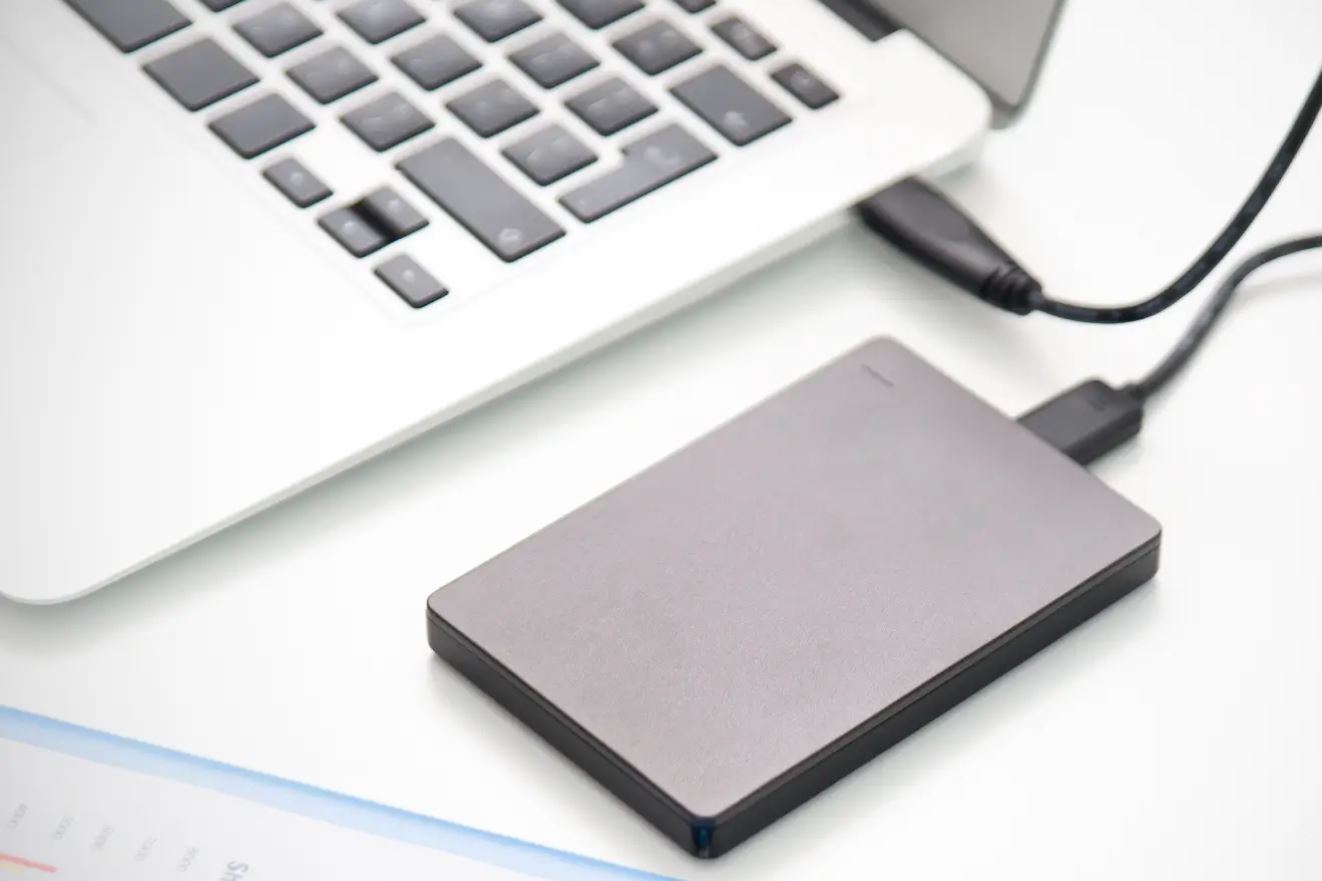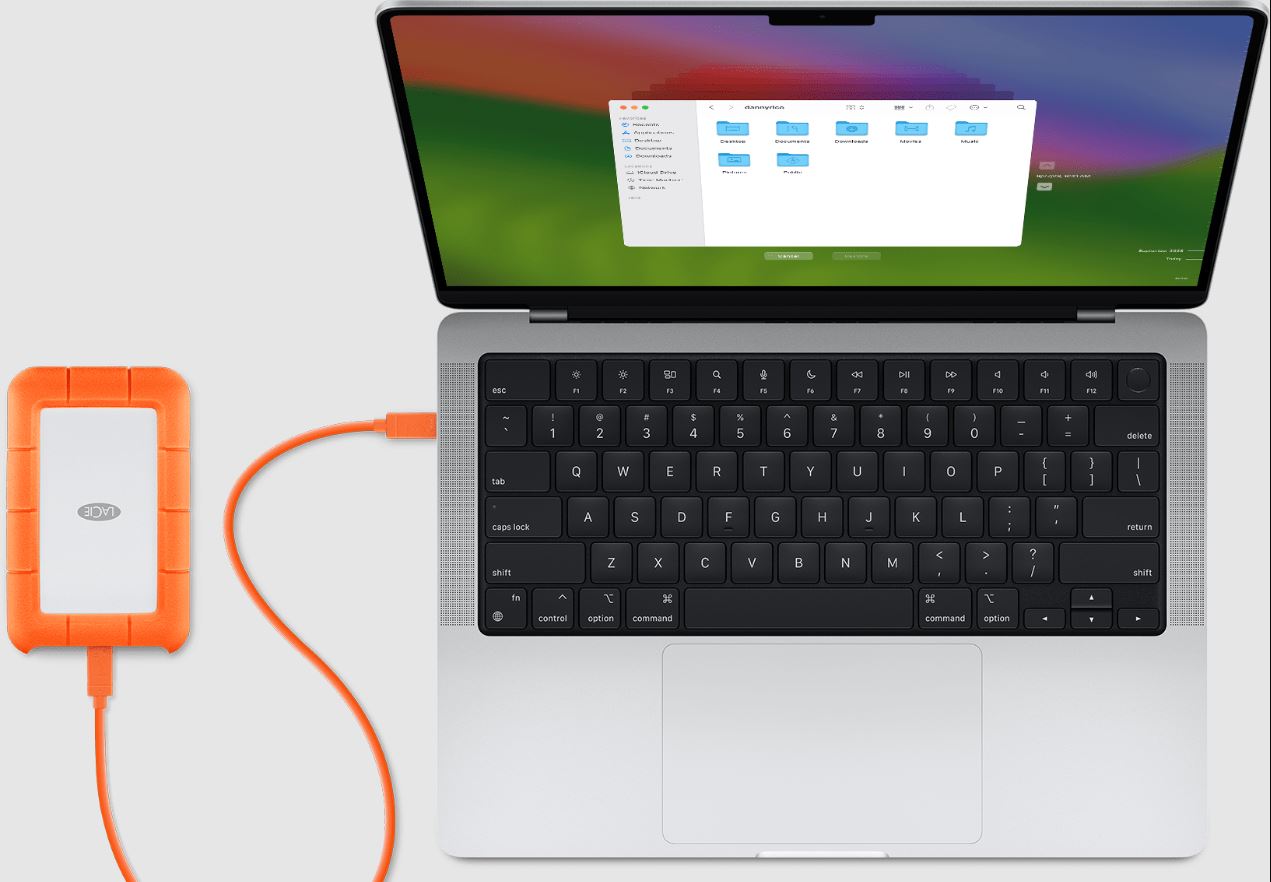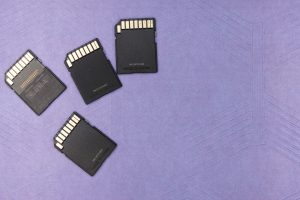Possible reasons why you can’t copy files to your external hard drive on your Mac
Having trouble copying files to your external hard drive on your Mac? Don’t worry, there are several potential reasons for this issue. Understanding these reasons can help you troubleshoot and resolve the problem. Here are some possible causes:
- Insufficient permissions: One common reason why you may not be able to copy files to your external hard drive is due to insufficient permissions. Check the permissions settings on your external hard drive to ensure that you have the necessary read and write access.
- File system compatibility issues: Another possible reason is compatibility issues between your Mac’s file system and the external hard drive’s file system. Different file systems, such as HFS+ and NTFS, may not be fully compatible, causing difficulties in file transfer.
- Drive formatting problems: If your external hard drive has not been properly formatted, it may not be recognized by your Mac or have limited functionality. Ensure that the drive is formatted correctly, such as using the exFAT or FAT32 format.
- Corrupted external hard drive: A corrupted external hard drive can also prevent file copying. This can occur due to physical damage, software errors, or power interruptions. Use disk utility tools to check and repair any potential disk errors.
- Damaged USB port or cable: A faulty USB port or cable can cause issues with file transfer. Try using a different USB port or replacing the cable to rule out any connectivity problems.
- Software conflicts: Certain software applications or background processes may interfere with file copying. Check for any running programs or processes that could potentially conflict with the copying process and temporarily disable them.
- Mac OS X update issues: Updates to the Mac operating system can sometimes introduce compatibility issues with external devices. Verify if any recent system updates have impacted the functionality of your external hard drive and consider rolling back the update if necessary.
- External hard drive hardware problems: Lastly, it’s possible that there might be hardware issues with your external hard drive. These could include mechanical failures, faulty connectors, or damaged components. In such cases, it may be necessary to consult a professional technician for further assistance.
Now that you’re aware of some potential reasons why you can’t copy files to your external hard drive on your Mac, you can proceed with troubleshooting steps to resolve the issue. Remember to approach each step systematically and consult relevant resources or seek expert advice if needed.
Insufficient permissions
One common reason why you may not be able to copy files to your external hard drive on your Mac is due to insufficient permissions. When you connect an external hard drive to your Mac, it may have specific permission settings that restrict certain operations, such as writing or copying files.
To check and modify the permissions settings for your external hard drive, follow these steps:
- Connect your external hard drive to your Mac.
- Open a Finder window and locate the external hard drive in the sidebar.
- Right-click or Control-click on the external hard drive and select “Get Info” from the context menu.
- In the Info window that appears, scroll down to the “Sharing & Permissions” section.
- You will see a list of users and their permissions. Ensure that your user account has “Read & Write” access.
- If your user account is not listed or does not have the necessary permissions, click on the lock icon at the bottom right of the window and enter your administrator password.
- Click the “+” button to add your user account, select your account from the list, and set the permissions to “Read & Write”.
- Click the lock icon again to prevent further changes.
Once you have adjusted the permissions settings, try copying the files to your external hard drive again. Now, you should have the necessary access to perform the task. If you still encounter issues, proceed to the next troubleshooting step.
Remember, it is important to exercise caution when modifying permissions settings, as incorrect changes can potentially affect the security and functionality of your system. If you are unsure about any aspect of this process, consider seeking assistance from a knowledgeable individual or consulting official Apple support resources.
File system compatibility issues
Another possible reason why you may experience difficulties in copying files to your external hard drive on your Mac is due to file system compatibility issues. Different file systems have their own specifications and may not be fully compatible with each other. This can result in limitations or errors when transferring files between devices.
Here’s what you need to know about file system compatibility:
Mac computers typically use the HFS+ or APFS (Apple File System) format. These file systems are optimized for macOS and offer excellent performance and features. However, they may not be natively supported by other operating systems, such as Windows.
On the other hand, Windows computers commonly employ the NTFS (New Technology File System) format. NTFS offers compatibility with Windows systems and provides additional features like file encryption and compression. However, out-of-the-box support for NTFS on macOS is limited.
If your external hard drive is formatted with a file system that is not fully compatible with your Mac, you may encounter issues when attempting to copy files.
To check the file system format of your external hard drive, follow these steps:
- Connect your external hard drive to your Mac.
- Open a Finder window and locate the external hard drive in the sidebar.
- Right-click or Control-click on the external hard drive and select “Get Info” from the context menu.
- In the Info window that appears, look for the “Format” field.
If the file system of your external hard drive is not compatible with your Mac, there are a few potential solutions:
- Convert the file system: If your external hard drive is currently formatted with a Windows-compatible file system like NTFS, you can convert it to a format compatible with macOS, such as exFAT or FAT32. Keep in mind that converting the file system will erase all existing data on the drive, so make sure to back up any important files before proceeding.
- Use third-party software: There are several third-party applications available that enable read and write access to non-native file systems on macOS. For example, software like Paragon NTFS or Tuxera NTFS can provide seamless compatibility with NTFS drives on Mac.
- Create separate partitions: If you frequently need to share files between macOS and Windows systems, you can consider creating separate partitions on your external hard drive. Format one partition with a macOS-compatible file system and the other with a Windows-compatible file system. This allows you to maintain compatibility without the need for additional software.
By addressing file system compatibility issues, you can ensure smooth file transfer between your external hard drive and your Mac. Choose the solution that best suits your needs and follow the necessary steps to enable seamless copying of files.
Drive formatting problems
If you’re having trouble copying files to your external hard drive on your Mac, one possible cause could be drive formatting problems. When you connect an external hard drive to your Mac, it needs to be formatted in a specific file system that is compatible with both your Mac and the external hard drive itself.
Here are some scenarios that can lead to drive formatting problems:
Incorrect formatting: If your external hard drive was previously formatted using a file system that is not supported by macOS, such as NTFS or FAT32, you may encounter issues when attempting to copy files. It’s important to ensure that your external hard drive is formatted with a file system that is compatible with macOS, such as HFS+ or APFS.
Corrupted file system: Over time, the file system on your external hard drive can become corrupted due to various factors, such as unexpected disconnections, power failures, or software glitches. A corrupted file system can cause errors and hinder file copying. In such cases, you may need to repair the file system using disk utility tools.
To check the current format of your external hard drive and to perform necessary formatting steps, follow these instructions:
- Connect your external hard drive to your Mac.
- Open a Finder window and locate the external hard drive in the sidebar.
- Right-click or Control-click on the external hard drive and select “Get Info” from the context menu.
- In the Info window that appears, look for the “Format” field. This will display the current file system format of your external hard drive.
- If the format is incompatible with macOS or if the file system appears to be corrupted, you may need to reformat the external hard drive. Be aware that reformatting will erase all data on the drive, so make sure to back up any important files before proceeding.
- To reformat the external hard drive, select the “Erase” tab in the Info window and choose the desired file system format (e.g., APFS, HFS+, exFAT, or FAT32).
- Follow the prompts to complete the formatting process.
After formatting the external hard drive with a compatible file system, you should be able to copy files to it without any issues. Remember to exercise caution when reformatting, as it will permanently erase all data on the drive.
If you continue to face problems with drive formatting or file copying, it may be necessary to seek professional assistance or consult official support resources to further diagnose and troubleshoot the issue.
Corrupted external hard drive
If you are unable to copy files to your external hard drive on your Mac, one possible reason could be a corrupted external hard drive. Corruption can occur due to various factors, such as physical damage, software errors, or power interruptions. A corrupted external hard drive can significantly impact its functionality, including the ability to copy files.
Here are a few signs that your external hard drive may be corrupted:
- Files or folders have disappeared or become inaccessible.
- Unusual error messages appear when attempting to access or copy files.
- The external hard drive is not recognized by your Mac or appears as an empty drive.
- The external hard drive freezes or crashes frequently.
If you suspect that your external hard drive is corrupted, there are some steps you can take to try and resolve the issue:
Run disk utility tools: macOS provides built-in disk utility tools that can help diagnose and repair common external hard drive issues. Connect your external hard drive to your Mac, open Disk Utility (located in the Utilities folder within the Applications folder), select your external hard drive, and click on the “First Aid” button. This will perform a scan and attempt to repair any detected errors.
Try a different USB port or cable: Sometimes, problems with a corrupted external hard drive can be attributed to faulty USB ports or cables. Connect your external hard drive to a different USB port on your Mac or use a different USB cable to rule out these potential connectivity issues.
Use data recovery software: If your external hard drive contains important data that you don’t want to lose, you might consider using data recovery software to retrieve files from the corrupted drive. There are several reputable data recovery applications available that can help recover data from corrupt external hard drives. It’s important to note that the success of data recovery may vary depending on the extent of the corruption.
If these steps do not resolve the issue and you still cannot copy files to your external hard drive, it may be necessary to consult a professional technician or contact the manufacturer for further assistance. They will be able to provide more specialized troubleshooting and potential solutions to resolve the corruption problem.
Remember to exercise caution when dealing with a potentially corrupted external hard drive, as attempting to fix the problem yourself without proper knowledge or expertise may lead to further data loss or damage to the drive.
Damaged USB port or cable
If you are facing difficulties in copying files to your external hard drive on your Mac, it’s possible that a damaged USB port or cable is causing the issue. USB ports and cables can experience wear and tear over time, leading to connectivity problems and hindering your ability to transfer files.
Here are a few signs that your USB port or cable may be damaged:
- The external hard drive is not recognized when connected to the USB port.
- The connection is intermittent, with files transferring at a slow speed or being frequently interrupted.
- The USB cable appears frayed, bent, or has visible signs of damage.
- The USB port is loose or wobbly, making it difficult to establish a stable connection.
To determine whether a damaged USB port or cable is the cause of the problem, you can try the following troubleshooting steps:
Test the external hard drive on a different USB port: Connect your external hard drive to another USB port on your Mac. If the drive is recognized and files can be copied successfully, it indicates that the previous USB port may be faulty. You can then avoid using that particular port and continue using the other functional USB ports.
Use a different USB cable: Replace the current USB cable with a known working cable. Ensure that the replacement cable is compatible with your external hard drive and supports the necessary transfer speeds. If the file copy operation progresses smoothly with the new cable, it indicates that the original cable was causing the problem.
Check for physical damage: Examine the USB cable for any visible signs of damage, such as frayed wires or bent connectors. Similarly, inspect the USB ports on your Mac for any debris or bent pins that may be interfering with the connection. If you notice any physical damage, it’s advisable to replace the cable or consult a professional technician for further assistance to repair the USB port.
If testing a different USB port or cable resolves the issue and allows you to copy files to your external hard drive without any problems, then the damaged USB port or cable was indeed the cause. However, if the issue persists despite using different USB ports or cables, then there may be other factors at play, such as software conflicts, drive formatting issues, or hardware problems with the external hard drive itself.
By ruling out damaged USB ports or cables as the reason for the file copying problem, you can focus on troubleshooting other potential causes to enable successful file transfers to your external hard drive.
Software conflicts
When you encounter difficulties in copying files to your external hard drive on your Mac, one possible cause could be software conflicts. Certain software applications or background processes running on your Mac can interfere with the file copying process, resulting in errors or failed transfers.
Here are a few scenarios where software conflicts can occur:
- Antivirus or security software: Sometimes, antivirus or security software installed on your Mac may identify certain files or operations as potential threats and prevent them from being copied to external devices. Consider temporarily disabling any antivirus or security software and attempt to copy the files again.
- File synchronization tools: File synchronization tools like Dropbox or Google Drive may continuously sync files in the background, which could conflict with copying files to your external hard drive. Temporarily pause or quit these applications and try the file copying process again.
- Third-party backup utilities: Backup utilities or Time Machine may be actively running backups or performing tasks that lock certain files and prevent them from being copied. Check for any ongoing backup processes and temporarily disable them to allow file copying.
- Other active applications: Sometimes, certain applications or processes may have exclusive access to files on your Mac, making them inaccessible for copying. Prioritize copying files when fewer applications are running in the background.
To mitigate software conflicts and improve the smoothness of file copying, try the following steps:
Quit unnecessary applications: Close any additional applications that are not required for the file copying operation. This reduces the chances of conflicts and ensures that system resources are allocated appropriately to the file copy process.
Temporarily disable background processes: Check for any background processes or utilities that may be actively accessing or managing files on your Mac. Pause or quit these processes temporarily to allow for uninterrupted file copying.
Exclude the external hard drive from security scans: If you suspect that your antivirus or security software is causing conflicts, consider excluding the external hard drive from the scan. Refer to the software documentation or settings to specify exclusions for external storage devices.
Restart your Mac: Sometimes, a simple restart can resolve software conflicts by clearing temporary files and resetting system processes. Restart your Mac and attempt to copy the files again.
By addressing software conflicts that may hinder file copying, you can improve the success rate and efficiency of transferring files to your external hard drive. It’s essential to keep your software and applications updated to minimize compatibility issues and ensure smooth operations.
Mac OS X update issues
If you are unable to copy files to your external hard drive on your Mac, it’s worth considering whether recent macOS updates may be causing the issue. Sometimes, updates to the Mac operating system can introduce compatibility problems or changes that affect the functionality of external devices, including external hard drives.
Here are a few possible scenarios where macOS updates may contribute to file copy problems:
- Software incompatibility: Certain software applications or drivers that were previously compatible may no longer work correctly after a macOS update. This can result in errors or limitations when copying files to your external hard drive.
- File system changes: macOS updates may introduce changes to the file system that your external hard drive uses. These changes can sometimes lead to compatibility issues, preventing successful file transfers.
- Drivers or firmware updates: Updates to drivers or firmware that manage external devices can sometimes cause conflicts or disrupt normal file copying operations. This is particularly relevant when using specialized or third-party external hard drives.
To diagnose and address potential macOS update issues, follow these steps:
Check for software updates: Ensure that both your operating system and software applications are up to date. Developers often release updates to address compatibility issues and improve overall stability.
Reinstall device drivers: If your external hard drive requires specific drivers or software to function, consider reinstalling them to ensure compatibility with the latest macOS update. Visit the manufacturer’s website to download and install the most recent driver or software version.
Verify external hard drive compatibility: Confirm that your external hard drive is compatible with the current macOS version. Check the manufacturer’s website for any updated compatibility information, patches, or firmware updates specific to your device.
Roll back macOS update: If you suspect that the issue began after a recent macOS update, you may consider rolling back the update to the previous version. Keep in mind that this process involves restoring your Mac to an earlier state, and it will remove any changes made since the update was installed. Ensure that you have a backup of your important files before proceeding.
If the file copy issue persists after exploring these solutions, it may be necessary to seek further assistance from Apple support or consult with the device manufacturer for more specific guidance.
Remember to regularly check for software updates and verify compatibility with your external hard drive to minimize the impact of macOS update issues on your file copying operations.
External hard drive hardware problems
If you’re encountering difficulties in copying files to your external hard drive on your Mac, it’s possible that the external hard drive itself has hardware problems. These issues can arise due to various factors, such as physical damage, manufacturing defects, or wear and tear over time.
Here are some signs that indicate possible hardware problems with your external hard drive:
- The external hard drive is not recognized by your Mac, or it intermittently connects and disconnects.
- Unusual noises, such as clicking or grinding sounds, emanate from the external hard drive.
- The external hard drive becomes unresponsive or freezes frequently during file copying.
- Files are corrupted or inaccessible on the external hard drive.
If you suspect that your external hard drive has hardware problems, consider the following steps:
Test on a different Mac or PC: Connect your external hard drive to another Mac or PC to determine if the issue persists. If the drive works fine on the second machine and permits file copying, it indicates that the problem may be specific to your Mac rather than the hardware itself.
Replace the USB cable and adapter: Sometimes, a faulty USB cable or adapter can cause connectivity issues with the external hard drive. Try using a new USB cable and adapter to rule out any problems with the existing ones.
Run hardware diagnostics: Some external hard drive manufacturers provide diagnostic tools that can help identify hardware problems. Check the manufacturer’s website for any specific tools or instructions on how to perform hardware diagnostics. These tools can help identify specific issues and provide recommendations for resolutions.
Consult a professional technician: If the external hard drive continues to exhibit hardware problems and none of the troubleshooting steps resolve the issue, it may be necessary to consult a professional technician who specializes in data recovery or external hard drive repairs. They will have the expertise and necessary tools to diagnose and repair hardware-related problems.
Keep in mind that hardware problems with external hard drives can sometimes be expensive or difficult to fix, depending on the severity of the issue. If your external hard drive contains important data, it’s crucial to weigh the costs and benefits of attempting repairs versus seeking professional assistance for data recovery.
By identifying and addressing potential hardware problems, you can determine the best course of action to resolve the issue and ensure the proper functioning of your external hard drive.
Steps to troubleshoot the issue and enable file copying
If you’re experiencing difficulties in copying files to your external hard drive on your Mac, there are several troubleshooting steps you can follow to resolve the issue. By systematically working through these steps, you can identify and address the underlying cause and enable successful file copying. Here are the steps to troubleshoot the problem:
- Check permissions and ownership settings: Ensure that you have the necessary read and write permissions for your external hard drive. Verify and modify the permissions settings in the “Sharing & Permissions” section of the Get Info window.
- Verify file system compatibility: Check if the file system format of your external hard drive is compatible with macOS. If not, consider converting the file system or using third-party software to enable compatibility.
- Format the external hard drive: If the drive is not properly formatted or has a corrupted file system, reformat it with a compatible format, taking care to back up any important data before proceeding.
- Test the drive on a different Mac or PC: Connect your external hard drive to another Mac or PC to determine if the issue persists across different systems. This can help identify whether the problem is specific to your Mac or if it’s related to the external hard drive itself.
- Check USB port and cable: Replace the USB cable or try a different port to rule out any issues with the port or cable. Damaged ports or cables can hinder the connection and file copying process.
- Update or reinstall software: Ensure that your Mac’s operating system, external hard drive drivers, and any relevant software applications are up to date. Consider reinstalling drivers or software if necessary.
- Verify Mac OS X updates: Check if recent macOS updates have affected the functionality of your external hard drive. Consider rolling back the update or seeking additional support to resolve compatibility issues.
- Perform hardware diagnostics on the external hard drive: If all other troubleshooting steps fail, it may be necessary to perform hardware diagnostics on the external hard drive. Consult the manufacturer’s website for diagnostic tools or seek professional assistance for further analysis and potential repairs.
By following these steps, you can narrow down the potential causes of the file copying issue and identify the most appropriate solution for your specific situation. Remember to back up any important files before attempting any troubleshooting or formatting processes to avoid data loss. If the issue persists or if you’re unsure about any step, it is advisable to seek expert assistance or consult official support resources to ensure a successful resolution.
Check permissions and ownership settings
One of the common reasons why you may encounter difficulties in copying files to your external hard drive on your Mac is due to permissions and ownership settings. When you connect an external hard drive to your Mac, it inherits certain permissions that dictate what actions you can perform, such as reading, writing, or copying files.
To check and modify the permissions and ownership settings for your external hard drive, follow these steps:
- Connect your external hard drive to your Mac.
- Open a Finder window and locate the external hard drive in the sidebar.
- Right-click or Control-click on the external hard drive and select “Get Info” from the context menu.
- In the Info window that appears, scroll down to the “Sharing & Permissions” section.
- You will see a list of users and their respective permissions for the external hard drive.
- Ensure that your user account has “Read & Write” access. If it is set to “Read Only” or “No Access,” you will need to change the permissions.
- If your user account is not listed or does not have the necessary permissions, click on the lock icon at the bottom right of the window and enter your administrator password.
- Click the “+” button to add your user account, select your account from the list, and set the permissions to “Read & Write” by clicking on the privileges dropdown menu.
- If there are other user accounts listed, make sure their permissions are appropriately set as well.
- Click the lock icon again to prevent further changes.
Once you have adjusted the permissions and ownership settings, attempt to copy the files to your external hard drive again. Now, you should have the necessary permissions to perform the task.
It is important to exercise caution when modifying permissions and ownership settings, as incorrect changes can impact the security and functionality of your system. Only make changes if you are sure about the necessary permission level and consult official Apple support resources if you have any doubts.
By ensuring that you have the correct permissions and ownership settings for your external hard drive, you can successfully copy files without any restrictions. If you continue to experience difficulties, proceed to the next troubleshooting step.
Verify file system compatibility
Another possible reason why you may face challenges when copying files to your external hard drive on your Mac is file system compatibility. The file system used by your external hard drive must be compatible with macOS for seamless file transfer. Different file systems, such as HFS+ (Mac OS Extended) or APFS (Apple File System), have certain characteristics and compatibility limitations.
Here are the key considerations for file system compatibility:
Mac file systems: macOS primarily uses the HFS+ and APFS file systems. These file systems offer robust support for macOS features and reliability, but they may not be recognized or fully compatible with other operating systems, such as Windows.
Windows file systems: On the other hand, Windows predominantly utilizes the NTFS (New Technology File System) format. While macOS can read NTFS-formatted drives, it has limited write support by default. This means you might encounter issues when copying files from your Mac to an external hard drive formatted with NTFS.
To verify the file system format of your external hard drive and ensure compatibility, follow these steps:
- Connect your external hard drive to your Mac.
- Open a Finder window and locate the external hard drive in the sidebar.
- Right-click or Control-click on the external hard drive and select “Get Info” from the context menu.
- In the Info window that appears, look for the “Format” field. This indicates the current file system format of your external hard drive.
If the file system format is not compatible with macOS, consider the following options:
- Convert the file system: If the external hard drive is currently formatted with a Windows-compatible file system like NTFS, you may convert it to a format that is fully compatible with macOS, such as exFAT or FAT32. However, keep in mind that converting the file system will erase all existing data on the drive, so make sure to back up any important files before proceeding.
- Use third-party software: Alternatively, you can utilize third-party software that enables writing to NTFS drives on macOS. Applications like Paragon NTFS or Tuxera NTFS provide seamless compatibility between macOS and NTFS-formatted drives.
- Create separate partitions: If you frequently need to share files between macOS and Windows systems, consider partitioning your external hard drive into separate sections. Format one partition as NTFS for Windows compatibility and another partition as a macOS compatible format. This way, you can maintain compatibility without the need for additional software.
By addressing file system compatibility issues between your Mac and the external hard drive, you can ensure smooth and hassle-free file transfer. Choose the most suitable option based on your requirements and follow the necessary steps to enable successful copying of files.
Format the external hard drive
If you’re unable to copy files to your external hard drive on your Mac, it’s possible that the drive is not properly formatted. Formatting sets up the file system structure on the drive, allowing it to be recognized and utilized by your Mac. However, incorrect formatting or a corrupted file system can hinder file copying operations.
To format the external hard drive and resolve any formatting issues, follow these steps:
- Connect your external hard drive to your Mac.
- Open Disk Utility by going to Applications → Utilities → Disk Utility.
- In the Disk Utility window, locate your external hard drive in the left sidebar and select it. Be cautious not to select the wrong drive.
- Click on the “Erase” button at the top of the Disk Utility window.
- Give your external hard drive a suitable name for easy identification.
- Choose the appropriate file system format for your needs. For maximum compatibility with macOS, select either “APFS” (recommended for macOS 10.13 and newer) or “Mac OS Extended (Journaled)” if you need backward compatibility with older macOS versions.
- If the external hard drive will be shared with other operating systems, consider selecting “exFAT” or “FAT32” as the file system format. Keep in mind that these formats have limitations, such as file size restrictions.
- Double-check that you have selected the correct drive and file system format. Once confirmed, click on the “Erase” button to begin the formatting process.
- Wait for the formatting to complete. This may take a few minutes, depending on the size of your external hard drive.
- After formatting is finished, your external hard drive should appear as a freshly formatted drive on your Mac.
It’s important to note that formatting your external hard drive will permanently erase all data stored on the drive. Therefore, ensure that you have made a backup of any important files before proceeding.
Once the formatting process is complete, attempt to copy files to your external hard drive again. You should now be able to copy files without encountering any issues related to incorrect formatting or a corrupted file system.
If the problem persists even after formatting, it’s advisable to proceed with additional troubleshooting steps to identify and resolve the underlying cause.
Test the drive on a different Mac or PC
If you are experiencing difficulties when copying files to your external hard drive on your Mac, it’s worth testing the drive on a different Mac or PC. This step can help determine whether the issue lies with your Mac or if there are problems with the external hard drive itself.
Here are the steps to test the drive on a different Mac or PC:
- Disconnect the external hard drive from your Mac.
- Connect the external hard drive to a different Mac or PC using the appropriate cables.
- Wait for the computer to recognize and mount the external hard drive.
- Attempt to copy files to the external hard drive from the different Mac or PC.
- If you are able to copy files without any issues on the different Mac or PC, it indicates that there may be a problem specific to your Mac.
- If you encounter the same problem on the different Mac or PC, it suggests that the issue lies with the external hard drive itself.
If the external hard drive works fine on the different Mac or PC, you can focus your troubleshooting efforts on your Mac. Consider undertaking steps such as checking USB ports and cables, reinstalling necessary software or drivers, or reviewing macOS updates that may have impacted the external hard drive’s compatibility.
On the other hand, if the external hard drive still encounters problems on the different Mac or PC, it suggests potential issues with the drive itself. In such cases, additional steps may be required, such as performing hardware diagnostics, seeking professional assistance, or considering data recovery options if important files are at stake.
Testing the drive on a different Mac or PC helps narrow down the possible cause of the issue and guides subsequent troubleshooting actions. It confirms whether the problem originates from your Mac or if the external hard drive requires further attention. By isolating the source of the problem, you can proceed with the appropriate steps to address it effectively.
Check USB port and cable
If you are encountering difficulties when copying files to your external hard drive on your Mac, it’s essential to check the USB port and cable. A faulty USB port or damaged cable can cause connectivity issues, leading to problems with file transfers.
Follow these steps to check the USB port and cable:
- Disconnect the external hard drive from your Mac.
- Inspect the USB cable for any visible damage, such as frayed wires or bent connectors. If you notice any physical damage, replace the cable with a known working one that is compatible with your external hard drive.
- Reconnect the external hard drive using the new USB cable.
- If the problem persists, try connecting the external hard drive to a different USB port on your Mac. This helps determine if the original port is faulty.
- If available, test the external hard drive on a different Mac or PC using the new USB cable. This step further confirms whether the issue lies with the Mac or the external hard drive itself.
If the external hard drive works seamlessly using a different USB cable or port, it suggests that the original USB cable or port was causing the issue. In such cases, replace the faulty cable or avoid using the problematic USB port.
If the problem persists when using different USB cables or ports, it indicates that there may be other causes affecting the file copying process. In such instances, proceed with troubleshooting steps related to software conflicts, drive formatting, or hardware diagnostics.
Regularly inspecting USB ports and cables for damage and ensuring their proper functionality can prevent potential connectivity issues and ensure smooth file transfers. If you suspect a hardware problem with your Mac’s USB ports, consult an authorized service provider or Apple Support for further assistance.
By thoroughly checking the USB port and cable, you can rule out any physical issues that may hinder the connection between your Mac and the external hard drive, ensuring reliable file copying operations.
Update or reinstall software
If you’re experiencing difficulties when copying files to your external hard drive on your Mac, it’s important to consider the software aspect of the issue. Outdated or incompatible software can cause conflicts that hinder the file copying process. By updating or reinstalling relevant software, you can address potential software-related problems.
Here are the steps to update or reinstall software:
- Operating system update: Ensure that your Mac’s operating system is up to date. Go to the Apple menu and select “System Preferences,” then choose “Software Update.” Install any available updates to keep your Mac running with the latest features and bug fixes.
- External hard drive drivers or utilities: Check if your external hard drive requires specific drivers or utilities for proper functionality. Visit the manufacturer’s website or support page to download and install the latest drivers or utilities.
- Backup and sync applications: If you use backup or sync applications like Time Machine, Dropbox, or Google Drive, make sure they are updated to the latest version. Check for any available updates or reinstall the software if necessary. Sometimes, outdated or conflicting versions of this software can interfere with file copying operations.
- Antivirus or security software: Antivirus or security software can sometimes identify certain files or actions as potential threats, preventing copying to external devices. Ensure that your security software is updated to the latest version and compatible with macOS. Temporarily disable the software or adjust the settings to allow file copying to the external hard drive.
- Third-party software: If you are using third-party file management or copying software, ensure it is updated to the latest version. In some cases, these tools can provide enhanced performance and compatibility for file copying tasks.
After updating or reinstalling the necessary software, attempt to copy files to your external hard drive again. It’s also a good idea to restart your Mac to ensure that all changes and updates take effect.
If the problem persists, further troubleshooting steps related to file system compatibility, drive formatting, or hardware diagnostics may be necessary.
Regularly updating your operating system, drivers, and applications helps ensure optimal performance and compatibility with external devices. Always download software from trusted sources to minimize the risk of compatibility issues and conflicts. If you encounter difficulties during the update or reinstallation process, refer to official documentation or contact the software manufacturer’s support team for guidance.
By addressing software-related issues through updates or reinstalls, you can improve the compatibility and stability of your system, allowing for smoother file copying to your external hard drive.
Verify Mac OS X updates
If you’re experiencing difficulties when copying files to your external hard drive on your Mac, it’s worth considering whether recent Mac OS X updates may be causing the issue. Updates to the macOS operating system can sometimes introduce compatibility problems or changes that affect the functionality of external devices, including external hard drives.
Here are a few scenarios where Mac OS X updates may contribute to file copy problems:
- Software incompatibility: Certain software applications or drivers that were previously compatible may no longer work correctly after a Mac OS X update. This can result in errors or limitations when copying files to your external hard drive.
- File system changes: Mac OS X updates may introduce changes to the file system that your external hard drive uses. These changes can sometimes lead to compatibility issues and prevent successful file transfers.
- Driver or firmware updates: Updates to drivers or firmware that manage external devices can sometimes cause conflicts or disrupt normal file copying operations. This is particularly relevant when using specialized or third-party external hard drives.
To verify if Mac OS X updates are affecting the functionality of your external hard drive, follow these steps:
- Ensure that your Mac is connected to the internet.
- Click on the Apple menu in the top-left corner of the screen and select “System Preferences.”
- Choose “Software Update.”
- Check for any available updates for your macOS version.
- If updates are available, click on “Update Now” to install them. Make sure to backup your important files before proceeding with the update.
- After the update is complete, restart your Mac to ensure that the changes take effect.
If the file copy issue arises after a recent Mac OS X update, you may consider rolling back the update to the previous version. Keep in mind that this process involves restoring your Mac to an earlier state, which will remove any changes made since the update was installed. Ensure that you have a backup of your important files before proceeding with a rollback.
If the problem persists even after updating or rolling back Mac OS X, consider checking for other potential causes such as file system compatibility, drive formatting, or hardware-related issues.
Regularly updating your Mac with the latest software updates helps ensure compatibility and stability. If you suspect that Mac OS X updates are causing compatibility issues with your external hard drive, consult official support resources or contact Apple Support for further guidance.
By verifying Mac OS X updates and addressing any relevant compatibility issues, you can maintain a smooth file copying experience with your external hard drive.
Perform hardware diagnostics on the external hard drive
If you have been unable to copy files to your external hard drive on your Mac despite trying various troubleshooting steps, it is worth considering the possibility of hardware issues with the drive itself. Conducting hardware diagnostics on the external hard drive can help identify any underlying problems and determine the course of action needed for resolution.
Here are some steps to perform hardware diagnostics on the external hard drive:
- Disconnect the external hard drive from your Mac.
- If your external hard drive has its own power supply, ensure it is properly connected and receiving power.
- Reconnect the external hard drive to your Mac using a known-working USB cable.
- If the external hard drive requires external power, check if the power cable or adapter is functioning correctly.
- Run disk utility tools on your Mac to check for any errors or potential issues with the external hard drive.
- Open Disk Utility by going to Applications → Utilities → Disk Utility.
- In Disk Utility, locate your external hard drive in the left sidebar and select it.
- Click on the “First Aid” button and allow the utility to scan and repair any detected errors on the external hard drive.
- Wait for the scan and repair process to complete, and carefully review the results for any indications of hardware issues.
- If the disk utility reports any severe hardware-related problems, such as bad sectors or physical damage, it is advisable to seek professional assistance or contact the manufacturer for further guidance.
If the disk utility does not report any significant hardware failures but the file copying issue persists, you might consider other troubleshooting options such as trying the external hard drive on a different computer or consulting with a professional technician specializing in data recovery and external hard drive repairs.
Remember that performing hardware diagnostics requires caution, and it is essential to back up any crucial data before proceeding. You should also refer to official documentation, support resources, or consult with knowledgeable professionals for specific guidance regarding your external hard drive model.
By conducting thorough hardware diagnostics on the external hard drive, you can gain insights into potential hardware-related problems and make informed decisions on whether to seek repairs or data recovery services.
Conclusion
Experiencing difficulties when copying files to your external hard drive on your Mac can be frustrating, but with a systematic approach to troubleshooting, you can identify and address the underlying issues. By considering factors like insufficient permissions, file system compatibility, drive formatting, hardware problems, software conflicts, Mac OS X updates, and faulty USB ports or cables, you can navigate through the potential causes and find a solution.
Start by checking the permissions and ownership settings on your external hard drive to ensure that you have the necessary access rights. Verify the file system compatibility between your Mac and the external hard drive and consider converting the file system or using third-party software if needed. Formatting the external hard drive correctly can also resolve any formatting problems or corrupted file systems.
If the issues persist, it’s worth testing the drive on a different Mac or PC to determine whether the problem lies with your Mac or the external hard drive itself. Check the USB port and cable for any damage or compatibility issues. Updating or reinstalling software, including the operating system, external hard drive drivers, and relevant applications can help resolve software conflicts. Verifying Mac OS X updates can address any compatibility issues introduced by recent updates.
If all else fails, performing hardware diagnostics on the external hard drive can help detect any hardware-related problems. Seek professional assistance or contact the manufacturer for further guidance if severe hardware issues are found.
Remember to back up your important files before embarking on any troubleshooting steps or formatting processes to avoid data loss. It’s also advisable to consult official documentation, support resources, or professionals for specific guidance related to your external hard drive model or other hardware components.
By following these steps and troubleshooting methods, you can overcome the challenges of copying files to your external hard drive on your Mac and ensure smooth and efficient file transfers.







